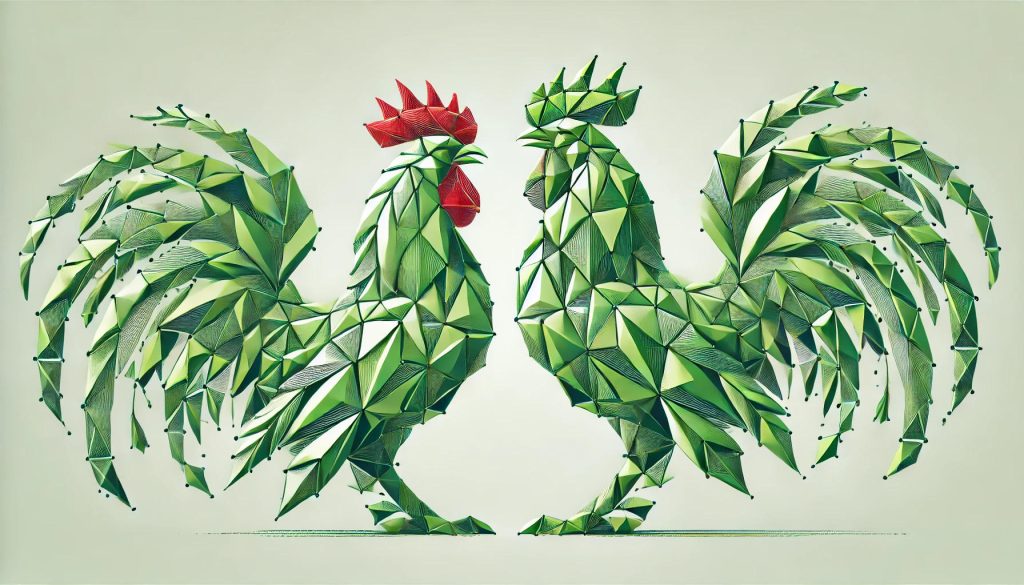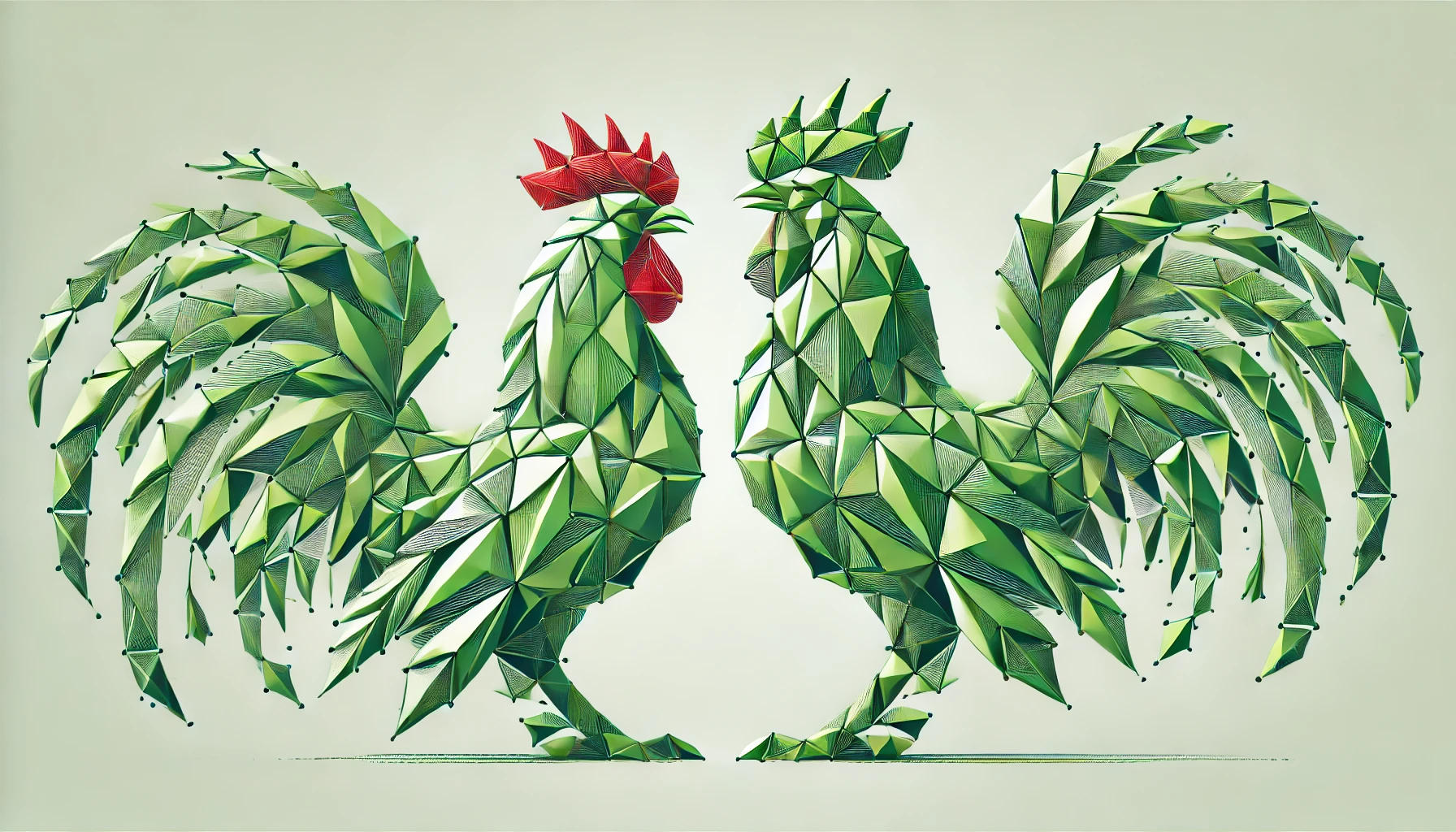Opening Scene
The Philippine countryside wakes to the sound of crowing roosters as the morning sun bathes the fields. Here, sabong is more than just entertainment—it is a cultural phenomenon deeply rooted in the lives of the Filipino people.

The Cultural Foundations of Sabong: From Tradition to Modernity
Narration
“Sabong is a competition infused with courage and resilience, embodying the spirit of the Filipino people in facing life’s challenges.”
The Philippines boasts over 1,000 licensed sabong arenas, hosting millions of matches annually. Each rooster is treated as a warrior, carefully bred and trained to compete at its peak. These sabong matches are not only a contest of breeding and training but also a nationwide celebration of tradition.
Scene Transition to Match Day
Outside the sabong arena, crowds gather in excited anticipation. Families and friends come together, ready for the day’s events. Major sabong tournaments attract live broadcasts on national television, making this not just a local spectacle but a cultural celebration recognized by tourists as a must-see event.
The Grand Matches of Sabong: A Blend of Competition and Passion
Narration
On match day, the sabong arena becomes the center of the community, filled with an air of passion and anticipation.
Inside the sabong cockpit, handlers meticulously prepare their roosters, checking feathers, health, and the installation of blades. Meanwhile, spectators engage in animated discussions, placing their bets amidst a cacophony of voices. The energy in the sabong arena is electric.
Scene Highlights
The referee signals the start of the sabong. The roosters clash in a burst of speed and power. The crowd falls silent, eyes fixed on the duel. Matches often last mere seconds to a few minutes, yet the intensity leaves spectators on the edge of their seats. The victorious rooster earns applause and cheers, filling the sabong arena with elation.
Narration
“The victorious handlers revel in their success, accepting congratulations from the crowd, while those who lose quietly reflect, sometimes departing the sabong arena in subdued silence.”
Beyond the Arena: The Cultural and Economic Impact of Sabong
Sabong is more than just a sport—it plays a significant role in the Philippines’ cultural and economic landscape. Winners can earn up to $60,000 in prize money, while losing roosters often end up as meals. Injured but surviving roosters are treated by specialized “chicken doctors” to recover for future sabong matches.
Sabong also draws tourists and documentary filmmakers eager to explore this cultural phenomenon. As one visitor aptly put it,
“If you haven’t seen a sabong, you haven’t truly experienced the Philippines.”

The Future of Sabong: Balancing Tradition and Controversy
Despite its cultural significance, sabong faces challenges in modern society. Animal rights advocates criticize sabong for its cruelty, while the rise of electronic sabong (e-sabong) has introduced issues of gambling addiction and societal harm. These challenges place sabong at a crossroads, forcing it to navigate the tensions between preserving tradition and addressing contemporary concerns.
Closing Scene
The camera pans out, showing the sabong arena fading into the vibrant landscape of the Philippine countryside. The sound of roosters crowing lingers in the air, echoing a sense of continuity and legacy.
Narration
“Sabong is a microcosm of Filipino culture—a blend of blood-pumping competition and a metaphor for life’s battles. It bridges the past and the future, reflecting the struggle and hope of tradition in the face of modernity.”

[…] sabong holds a special place in Philippine tradition, Ed’s experience underscores the need for improved safety measures in cockfighting arenas. […]
[…] Sabong is a deeply rooted cultural activity in the Philippines, blending tradition, entertainment, and betting. Matches are intense and thrilling, drawing passionate crowds who eagerly place their bets on roosters. To enhance the spectacle, the roosters’ legs are fitted with sharp blades called Tari, turning them into lethal weapons capable of inflicting deadly injuries on their opponents—or even humans. Though accidents are rare, the inherent risks of sabong became tragically evident on this fateful day. […]
[…] Kikoy and other children like him, sabong has become more than just a cultural tradition. In their world, sabong represents opportunity, a chance to earn money, to gain a fleeting sense of […]
[…] story serves as a stark reminder of gambling’s double-edged nature. While sabong remains a cherished tradition, it must be approached with caution. When passion becomes obsession, and entertainment turns into […]
[…] roosters to those who want to excel in the cockfighting scene. This dual focus meets the demands of Sabong culture and provides additional opportunities for betting strategies centered on high-performing […]
[…] Future Vision: Strengthening the Sabong Tradition […]
[…] trusted handler, Manuel Brol. Their collaboration has resulted in a seamless system that balances traditional Sabong techniques with modern strategies, ensuring the farm’s continued success in local and national […]
[…] camping areas, event spaces for weddings, and dining facilities. Visitors now experience a blend of Sabong culture and recreational activities, making the farm a unique destination for both enthusiasts and […]
[…] Continuing a Family Tradition in Sabong […]